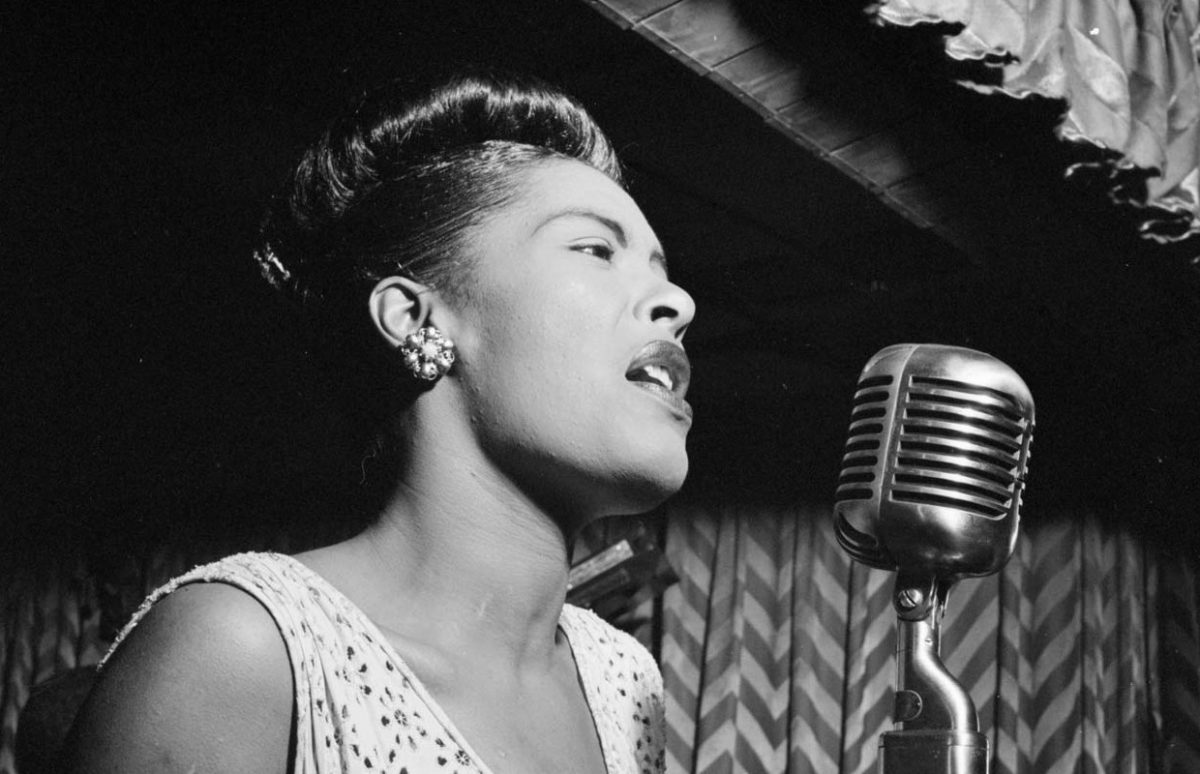Jazz singer Billie Holiday’s 1939 recording of “Strange Fruit” has become one of the most potent protest songs in U.S. history. Its images of lynched African Americans accompanied the civil-rights movement but still evoke uncomfortable truths today.
The song was written by a Jewish Communist high-school teacher, Abel Meeropol. It was originally a poem, written in reaction to seeing a photograph of two African American men who had been hanged in a lynching: “the strange fruit hanging from the poplar trees.” He originally submitted it to a teachers’ union publication, then set it to music. In 1939, he played it for Billie Holiday, who was a major jazz star. From then on, it became a fixture in her set, and her biggest hit.
Her normal record label Columbia, refused to record it, so she did it for a smaller, left-wing label, Commodore records. She always sang it at the end of a set, with the lights off in the room and a single spotlight on “Lady Day”. Many venues she played were still segregated, and some objected to her singing it, so she had a clause written into her contracts giving her the option to sing it.
Anti-lynching campaigners sent copies of the single to members of Congress, supporting anti-lynching legislation. Founder of Atlantic Records, Ahmet Ertegun, called it “a declaration of war … the beginning of the civil-rights movement”.
Opposition
Many believe, and Holiday herself certainly did, that government opposition to her singing "Strange Fruit" led to a campaign against her by the Federal Narcotics Bureau, which led to her arrest and imprisonment for drugs possession in 1947. (That's the subject of the 2021 film The United States vs Billie Holiday.) Abel Meeropol was called to testify in front of a McCarthy-era committee investigating Communist influences in New York schools. He denied that the Communist Party had asked him to write the song.
The Library of Congress entered the song into the National Recording Registry, which contains music which is, “culturally, historically, or aesthetically important, and/or inform or reflect life in the United States” in 2002, the first year of its existence.
You can listen to the song on the Registry playlist of inductees for 2002.
The accompanying essay by Julia Blackburn gives fascinating details about the song.
This short documentary from the Kennedy Center Education Digital Learning is part of a series on music and its role in the early years of the civil-rights movement. (It's essentially a podcast, there are no moving images.)
"Strange Fruit" would make a great addition to Shine Bright 3e File 6 Move on up, Shine Bright 2e File 19 Breaking the Chains or Shine Bright 1e File 8 African-American Art.
Copyright(s) :
Library of Congress
> Aretha Franklin Honoured with a Pulitzer Prize
> The Soul of Civil Rights
> The Times They Are A-Changin’
> Amazing Grace
> Dancing Nina Simone
> Billie Holiday: Blues and Civil Rights
Tag(s) : "African-American culture" "Billie Holiday" "civil rights" "Detroit" "jazz" "music" "protest songs" "Shine bright 1e" "Shine bright 2e" "Shine bright 3e" "Strange Fruit" "U.S. culture"





